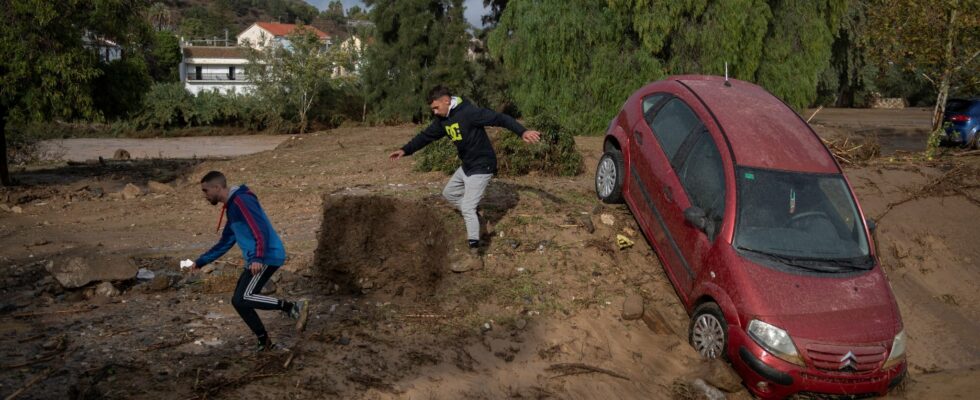Locate possible survivors. Unclog disaster areas. These are the missions of thousands of firefighters, rescuers and law enforcement on this Thursday, October 31, the first day of national mourning decreed by the Spanish government. Tuesday and Wednesday, Spain was the scene of deadly floods. A severity without equal in the country since the floods of October 1973, which left 300 dead.
According to the latest report established Wednesday evening, 95 people died in the southeast of the country, including 92 in the Valencia region alone. In the village of Chiva, in the hinterland of Valencia, nearly 491 liters of water per m2 fell in eight hours, the equivalent of a year’s worth of precipitation. A dramatic assessment which raised a major question: how to explain such a number of victims?
A late warning?
First avenue studied: the delay of the regional government in alerting the population. It is 7:31 a.m. this Tuesday, October 29 when the State Meteorological Agency (Aemet) issues a red alert for the Valencia region. “Extreme caution! The danger is extreme,” announces the agency. The signal seems to leave no doubt: violent floods are expected. But it was not until 5 p.m., when the situation had deteriorated throughout the day, that the Integrated Operational Coordination Center (Cecopi), responsible for coordinating the action of relief organizations in the event of an emergency, emergency, is being set up in Valencia.
The government will end up sending an alert message to the residents of the “terreta” shortly after 8 p.m. via the Civil Protection service, asking them not to leave their homes. That is almost 13 hours after the first alert. According to the Spanish daily El Paísthe SMS would even have been sent after 9 p.m. in certain villages, which are currently among the most devastated by the waters.
These lost hours, crucial for the safety of the population, are currently the subject of speculation. Did the authorities take too long to react? Could victims have been avoided without such a delay in broadcasting the alert? Thousands of people were swept away by the floods after finding themselves stranded on the roads, because they had initially remained at their workplace, or because they had left their homes later. noon. Asked about the issue, the Minister of Territorial Policy Angel Víctor Torres did not wish to elaborate, simply recalling the time of the Aemet alert and that of the sending of the Civil Protection message.
The impact of global warming
One thing is certain: the government could not have avoided these floods. If these natural disasters occur frequently in the Valencia region, they have probably been amplified by global warming. “We live on a warmer planet [qu’autrefois]with an atmosphere that retains more energy”, underlined Aemet on […] It can rain the same annual volume, or even a little more, but in a different way, in fewer days of precipitation.”
For the moment, although it is impossible to know the true role played by global warming in these floods, the European Union is already working on ways to protect itself. “In just a few months, floods have hit Central and Eastern Europe, Italy and now Spain. This is the dramatic reality of climate change and we must prepare to face it across our Union and with all the tools at our disposal”, reacted the President of the European Commission, Ursula von der Leyen.
This Thursday, Spanish Prime Minister Pedro Sanchez called on residents of the Valencia region to “stay at home”, as the risk has not yet been ruled out. “Please stay home […] listen to the calls for emergency help,” he said. A new red alert has been issued for the province of Castellón, north of Valencia. This raises fears of new victims, even as the flood toll of Tuesday and Wednesday is not definitive.
